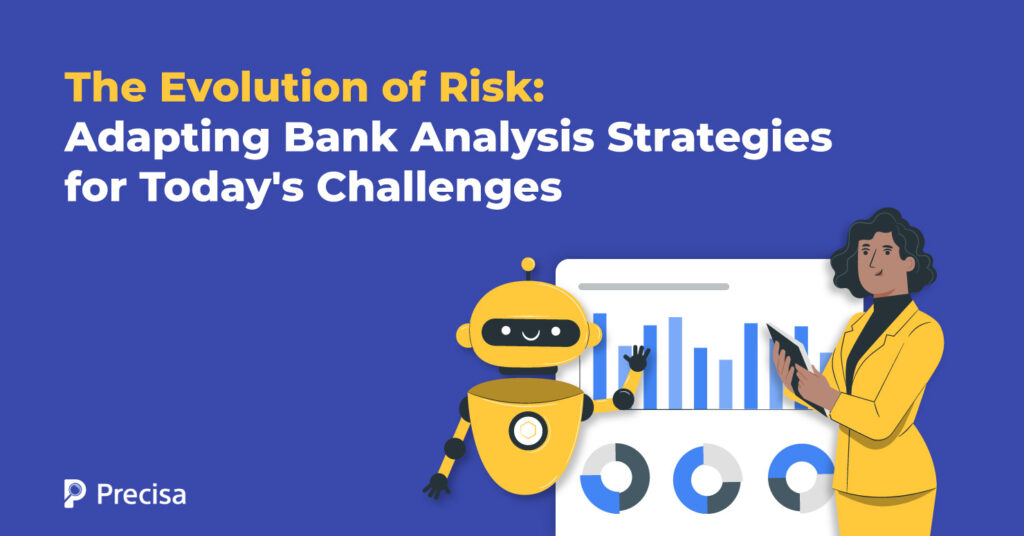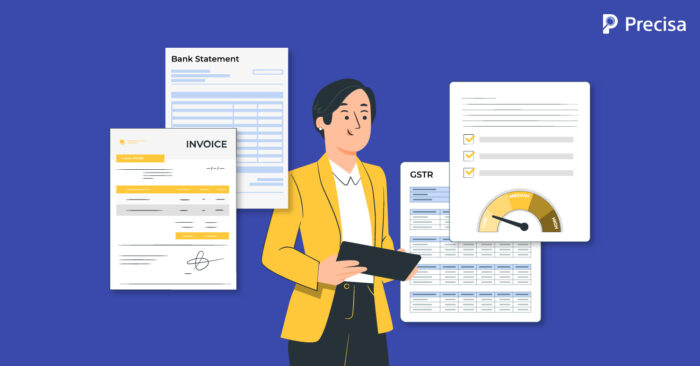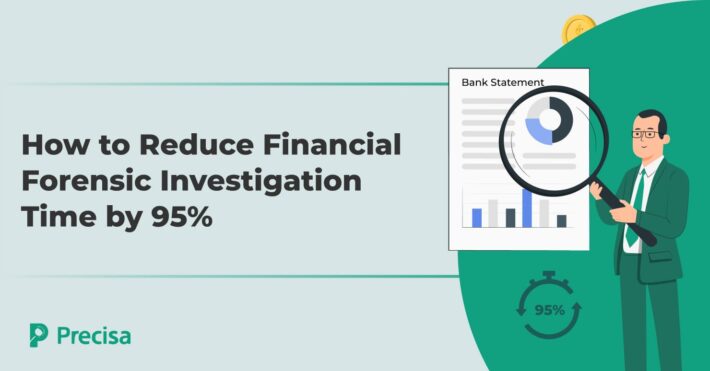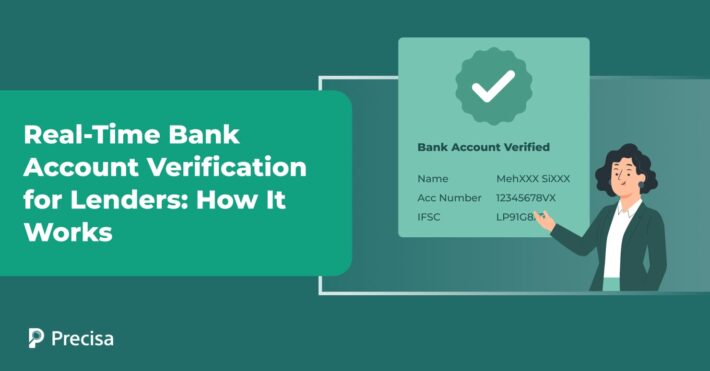Bank Statement Analysis Strategies for Today’s Challenges

As the lending industry continues to grow, risk assessment and management will emerge as one of the top functions, enabling lenders to build sustainable, profitable businesses. Managing risk effectively can help companies prevent the growth of non-performing assets (NPAs), loan fraud, lending scams, and other negative consequences.
Financial technology will play a key role in this journey.
In a global survey of 44 financial institutions, 60% of respondents shared that they increased usage of alternative types of data and adoption of technologies like Machine Learning in credit portfolio management.
Also, over 75% of respondents expect these trends to continue evolving to help better assess and manage risk.
In this blog, we identify key bank statement analysis strategies that can help lenders safeguard their business from risk and take advantage of lucrative market opportunities.
What are Bank Statement Analysis Strategies?
Bank statement analysis strategies refer to a set of best practices adopted by lenders to reduce and manage risk effectively.
These strategies can help lenders address some of the top emerging challenges faced by lenders in managing risk today.
Superior technology will play a key role in enabling these practices by bringing data-centricity, customer-centricity, and accuracy to the risk management function.
Top Risks Faced by Lending Businesses
Now, let’s understand the key types of risks that make lenders vulnerable to various negative outcomes, such as investigations, the rise of NPAs, lower ROI, and potential shutdowns.
Inaccurate Risk Assessment
Realistically, analysing a borrower’s creditworthiness can be challenging due to a lack of access to comprehensive data. Lenders are often forced to make decisions based on limited documentation.
An inaccurate assessment of a borrower’s financial health can result in their inability to repay their loans.
Insufficient Detection of Loan Fraud
Loan fraud is a growing reality, and it can happen in several ways. Borrowers can engage in identity theft, use fake documents, and also inflate their revenues.
For example, they may engage in the practice of circular transactions. Lenders may not have the skills and tools to detect potential fraud early on.
Inability to Capitalise on Market Opportunities
Despite there being glaring credit gaps in the market, lenders may be unable to take advantage of opportunities due to a lack of customer-centric and data-centric processes.
This loss of opportunity is as much a risk as inaccurate financial analysis systems. For instance, lenders are struggling to effectively convert leads from Micro, Small, And Medium-Sized Enterprises (MSMEs) into first-time and repeat customers.
Low Borrower Trust
The rise of lending scams executed by fraudulent lenders and fly-by-night operators has damaged borrower trust.
In such a scenario, even credible lenders are struggling to convert leads into customers and increase consumer lifetime value (CLV).
Top 6 Bank Statement Analysis Strategies to Mitigate Risk

Here is a snapshot of six bank statement analysis strategies that can enable lenders to foolproof their risk management function.
1. Tap All Alternative Data Sources
Lenders must ensure that they have access to multiple sources of data, which can help them assess borrowers’ creditworthiness more accurately.
Instead of merely relying on revenue/ income statements, lenders can review a mix of alternative data, such as:
- Bank statements of all savings and current accounts
- Tax returns
- Credit history
- Invoice outstanding
2. Accurate Data-Driven Financial Analysis
Lenders that continue to rely on manual interventions or legacy software to analyse a borrower’s financial data run the risk of making errors and omissions in evaluations. This approach is also not cost-effective, as it requires excessive human resources, not to mention the cost of inaccurate analysis.
Lenders must consider upgrading their technology and adopting automated, AI-powered bank statement analysis solutions that can predict whether borrowers can repay loans.
Every bank transaction is segregated into inflow and outflow categories and is accounted for. Based on all the data, this cutting-edge solution allocates its creditworthiness score, enabling lenders to make data-driven decisions.
3. Cross-Analysis Revenues
Lenders can benefit from cross-checking the authenticity of revenue data to ensure that sales take place for business borrowers.
Revenue-related transactions can be categorised together and cross-referenced against Goods And Services Tax Returns (GSTR) data.
Lenders can revive revenues using this technique and ensure that they are lending to a revenue-generating business. The adoption of bank statement analysis software automates and expedites the entire process. This process enables lenders to offer credit to businesses without a credit history, or assets,
4. Enhance Fraud Detection Capabilities
Today, advances in digital technology have made it easier than ever for borrowers to commit lending fraud. Identity impersonation, the use of fake documents, and the projection of inflated revenues and assets are just some of the common methods.
To combat such activities, lenders are leveraging Artificial Intelligence (AI) and other technologies to detect potential fraud early on.
The use of AI-powered bank statement analysis tools, for instance, can pick up unusual transaction patterns, minute inconsistencies in documentation, and identity-related inconsistencies.
5. Customer-Centric Processes
Instilling trust in borrowers is an important goal for lenders, especially against the backdrop of lending scams. Simplifying the user journey and delivering a high-trust experience to borrowers can help convert leads into customers and repeat customers.
Automating the entire lending workflow through the use of smart bank statement analysis tools can play an important role in this shift.
For instance, with a user’s consent, a superior tool can pull financial data from an account aggregator, saving borrowers and lenders the time and resources that usually go towards submitting or acquiring such information.
6. Personalised Solutions
Another key bank statement analysis strategy is to offer borrowers customised solutions rather than one-size-fits-all products and services. Offering standardised products to borrowers of diverse sizes, sectors, and scales can prove expensive, especially for MSME borrowers.
A better approach is to leverage technology that can automate solutions. For instance, a superior bank statement analysis solution can recommend customised products for borrowers based on their specific needs, cash flows, and business models.
Thus, lending terms and conditions such as EMI, tenure, and interest rates can be determined based on real-time data.
The Takeaway
Strengthening risk assessment is emerging as one of the top ways to build a robust credit portfolio. Leveraging automated, AI-powered bank statement analysis tools can give lenders a competitive edge through data-driven operations and decision-making.
Cloud-based analytics platform Presica’s comprehensive and seamless financial data analysis solution simplifies and speeds up the process through automation.
The software provides actionable insights on a customisable dashboard, thus helping companies make informed business decisions.
Request a free demo today!



